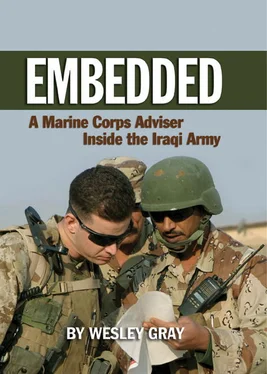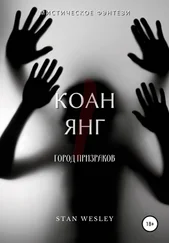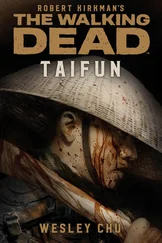After checking that our Chameleons were fully functional, we left for our first IED-dodging convoy to Al Asad Airbase, the “Club Med” of Al Anbar Province, located thirty-five miles south of Haditha Dam. The mission was to conduct a leave run (“leave” is the military term for vacation). I am still trying to figure out the peculiarities of how the leave run process works. Apparently everyone in the IA works twenty days and then takes ten days of leave to see their families. This is the standard set by the Iraqi Ministry of Defense. The Iraqi army makes the French work schedule look like a Chinese sweatshop.
Every ten days a leave run was required. All jundi going on leave from 2nd Brigade, 7th Division Iraqi army, which included our battalion in the Haditha Triad as well as battalions in Hit (an insurgent hotbed forty miles southeast of Haditha) and Rawah (a small town located thirty miles west of the Triad), converged at the 2nd Iraqi Brigade headquarters camp on Al Asad Airbase. From there the jundi were jammed onto civilian buses, integrated into a U.S. military convoy, and moved southeast from Al Asad, where the convoy picked up other IA soldiers going on leave from various divisions in Al Anbar.
The buses moved through some of the more treacherous areas in Al Anbar Province. Their first “scenic” city along the drive was Ramadi, which was followed by another “tourist attraction,” Fallujah. If the buses survived they skirted south of Baghdad and moved south toward Najaf, the final destination. Najaf is a large city in southern Iraq and is midpoint between Baghdad and Basrah. It is a reasonable destination for our brigade, as more than 90 percent of the soldiers in 2nd Brigade are Shia Muslims from the southern areas of Iraq.
Under the current method of operations this generous leave schedule means every ten days the MiTTs are risking their lives so the jundi can see their families every twenty days. Remarkably, Iraqis were angry at their twenty-days-on, ten-days-off schedule and threatened to quit if they did not get their leave. This was ridiculous to us, considering all MiTT members were on tours ranging from seven to fifteen months.
The leave process did not lend itself to minimizing risk for MiTT members or the IA. Leave operations were especially convoluted for our battalion, which was spread between five locations in the Triad. A MiTT joke was that the primary objective of the MiTT is not to train, support, and advise the IA on how to conduct counterinsurgency operations so we can leave Iraq but to gather jundi throughout the Triad so they can go home to see their families every twenty days.
The easiest way to understand the leave process is to think of it as a school bus. The school bus gets the kids from school and drops them off at their bus stops. Similarly, the first stage of a leave convoy involved convoying to Al Asad to pick up Iraqi soldiers coming back from leave. We typically went one day prior to the jundi arriving and spent the night in Al Asad so we could take care of any business we needed to conduct there. The following day the jundi arrived, at about 0400 to 0500. After the Iraqis inventoried who was returning from leave, the convoy headed north, back toward Camp Ali (see map 2).
Our first two stops on the route back to Camp Ali were Baghdadi, home of 3rd Iraqi Company, and Haqliniyah, 1st Iraqi Company’s base. In the respective locations we dropped off the jundi coming off leave and picked up jundi who were ready to go on leave. Essentially we were making a one-for-one jundi swap.
Once we reached Camp Ali we offloaded everyone except for the jundi who were from 4th Iraqi Company, which was located on the Marine FOB (forward operating base, pronounced “faub”) in central Haditha. The convoy to Haditha was dangerous. By reforming a smaller convoy at Camp Ali that only consisted of the jundi that belonged to 4th Iraqi Company, our adviser team could minimize the number of vehicles and personnel in the convoy, thus lessening the exposure to the inevitable IED attacks on the route to Haditha.
Map 2. Iraqi Army convoy operations during a leave period.
Once the MiTT arrived at the Haditha FOB, we swapped the jundi and returned to Camp Ali. If the process already sounds complicated, stand by, it is not over. Once we returned to Camp Ali we had to do yet another convoy to Barwana, home to 2nd Iraqi Company. Barwana is on the eastern side of the Euphrates River about thirty miles from the dam. Because of the PPIED threat on the route to Barwana (which required a convoy to move slowly in order to spot pressure-plate switches), a convoy took two to three hours. Once we arrived at the Barwana FOB we again swapped jundi and brought them back to Camp Ali.
In the end we dropped off all jundi coming off leave at their respective firm bases (dropped the kids off at their bus stops) and managed to collect all jundi going on leave at Camp Ali. Keeping track of the number of convoys thus far? We’re on eight, and we’re not done yet.
The final stage in the leave process was to screen all the jundi going on leave for contraband and theft while at Camp Ali. Once they were screened we loaded them like cattle into the back of flatbed Leylands and conducted yet another convoy to Al Asad to drop them off at brigade headquarters so they could get on buses there and begin their fourteen-hour journey to Najaf. Once they were delivered to brigade headquarters, the MiTT returned to Camp Ali that same night (see photo 7).
Leave runs were exhausting and exposed MiTT members to extreme danger. In the end, on a single leave run, an MiTT conducted ten combat convoys, drove 250 miles on some of the highest IED threat routes in Iraq, and traveled over twelve hours in a Humvee in less than a thirty-six hour period. I hoped the IA appreciated what we were doing for them.
Route Bronze is the path we chose for our first leave run, given the PPIED threat along Route Uranium, which is a military-only road leading to Al Asad. Route Bronze is a two-lane paved highway that weaves along the Euphrates River and gives a wonderful tour of the area. But Route Bronze was also infested with CWIEDs. Grim reminders of IED death and destruction were evident everywhere along the road. There were massive IED craters spattered along the road, making it look like a piece of asphalt-colored Swiss cheese. Combat engineers filled and marked the holes as fast as possible, but they could not repair the damage as fast as the insurgents could plant IEDs (see photo 8).
Aside from the massive IED potholes along the road, the route was well maintained and at times scenic. Part of the route moves on the outskirts of the major towns and villages. To the east are various villages in the region, which snuggle up next to the Euphrates River. The view to the west is treacherous desert. All we saw there was the occasional blank stare from a random sheepherder who was providing reconnaissance for the insurgents. I never saw any grass to the west of Route Bronze: why did sheepherders graze their flocks there?
Along Route Bronze we were kings. The Iraqis led the convoy and their lead turret gunner waved a large orange flag as a reminder to the locals to move it or lose it. Locals knew the drill: if they did not move, a hail of 7.62-mm metal slugs from jundi AK-47s and RPK machine guns would come flying toward their craniums.
Crowds parted like the Red Sea when our convoy moved through. The locals veered into the desert a hundred meters off the road, got out of their cars, and faced away from the road. Some adhered to the rules better than others. Thankfully for the civilians, Iraqi turret gunners knew how to distinguish between a credible threat and a lazy Iraqi who wasn’t following the rules. It was unfortunate to disrupt civilians’ lives in this way, but the threat of vehicle-borne IEDs was constant in the Triad.
Читать дальше












